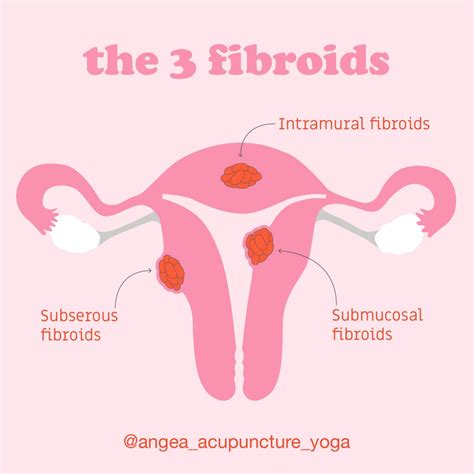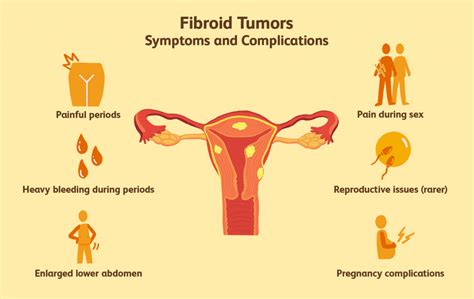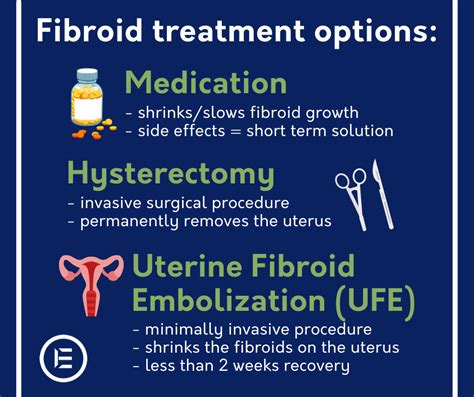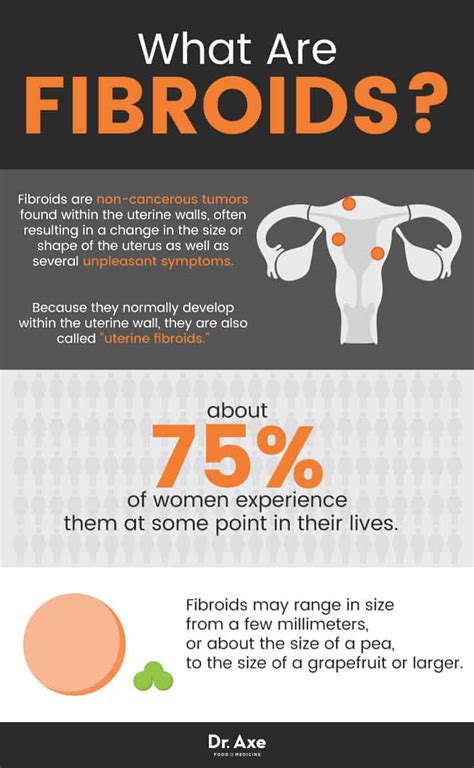Intro
Discover symptoms, causes, and treatments of fibroids in uterus, including uterine fibroid tumors, ovarian fibroids, and cysts, to manage womens reproductive health and alleviate painful periods, heavy bleeding, and infertility issues.
Uterine fibroids are a common health issue that affects millions of women worldwide. These non-cancerous growths can develop in the uterus, causing a range of symptoms that can impact daily life. Despite their prevalence, many women are unaware of the causes, symptoms, and treatment options available for uterine fibroids. In this article, we will delve into the world of fibroids in the uterus, exploring the importance of understanding this condition and the various ways to manage it.
Fibroids in the uterus can be a significant concern for women, particularly those of reproductive age. These growths can cause heavy menstrual bleeding, pelvic pain, and pressure on surrounding organs, leading to discomfort and distress. In some cases, fibroids can also affect fertility and pregnancy, making it essential for women to seek medical attention if they experience any symptoms. By understanding the causes and symptoms of uterine fibroids, women can take proactive steps to manage their condition and improve their overall well-being.
The impact of fibroids on women's health cannot be overstated. According to the National Institute of Child Health and Human Development, up to 80% of women will develop uterine fibroids by the age of 50. While many women may not experience symptoms, those who do can face significant challenges in their daily lives. From heavy bleeding and pelvic pain to infertility and pregnancy complications, the effects of fibroids can be far-reaching. By educating themselves about this condition, women can empower themselves to take control of their health and make informed decisions about their care.
What Are Uterine Fibroids?

Uterine fibroids, also known as leiomyomas, are non-cancerous growths that develop in the uterus. These growths are made up of smooth muscle cells and fibrous tissue, and can vary in size, shape, and location. Fibroids can grow on the outer surface of the uterus, within the uterine wall, or beneath the uterine lining. While the exact cause of fibroids is unknown, research suggests that hormonal and genetic factors may play a role in their development.
Types of Uterine Fibroids
There are several types of uterine fibroids, including: * Submucosal fibroids: These growths develop beneath the uterine lining and can cause heavy menstrual bleeding and infertility. * Intramural fibroids: These growths develop within the uterine wall and can cause pelvic pain and pressure on surrounding organs. * Subserosal fibroids: These growths develop on the outer surface of the uterus and can cause pelvic pain and pressure on surrounding organs. * Pedunculated fibroids: These growths develop on a stalk-like structure and can cause pelvic pain and pressure on surrounding organs.Symptoms of Uterine Fibroids

The symptoms of uterine fibroids can vary depending on the size, location, and number of growths. Common symptoms include:
- Heavy menstrual bleeding
- Pelvic pain and pressure
- Abdominal bloating and discomfort
- Frequent urination
- Constipation
- Infertility and pregnancy complications
Diagnosing Uterine Fibroids
Uterine fibroids can be diagnosed using a variety of techniques, including: * Pelvic exam: A healthcare provider can perform a pelvic exam to feel for any abnormalities in the uterus. * Ultrasound: An ultrasound can be used to visualize the uterus and detect any growths. * MRI: An MRI can be used to provide detailed images of the uterus and detect any growths. * Hysteroscopy: A hysteroscopy can be used to visualize the inside of the uterus and detect any growths.Treatment Options for Uterine Fibroids

The treatment options for uterine fibroids depend on the size, location, and number of growths, as well as the severity of symptoms. Common treatment options include:
- Watchful waiting: Small fibroids that do not cause symptoms may not require treatment.
- Medications: Hormonal medications can be used to shrink fibroids and reduce symptoms.
- Surgery: Surgical procedures, such as myomectomy or hysterectomy, can be used to remove fibroids or the entire uterus.
- Minimally invasive procedures: Procedures, such as uterine artery embolization or radiofrequency ablation, can be used to shrink or destroy fibroids.
Natural Remedies for Uterine Fibroids
In addition to medical treatment, there are several natural remedies that may help alleviate symptoms of uterine fibroids, including: * Dietary changes: Eating a balanced diet that is rich in fruits, vegetables, and whole grains can help reduce symptoms. * Herbal supplements: Herbal supplements, such as turmeric and ginger, may help reduce inflammation and alleviate symptoms. * Acupuncture: Acupuncture may help reduce pain and improve overall well-being.Living with Uterine Fibroids

Living with uterine fibroids can be challenging, but there are several ways to manage symptoms and improve overall well-being. By understanding the causes and symptoms of fibroids, women can take proactive steps to manage their condition and reduce their risk of complications. By working with a healthcare provider and exploring treatment options, women can find relief from symptoms and improve their quality of life.
Support and Resources
There are several resources available to support women living with uterine fibroids, including: * Online support groups: Online support groups can provide a safe and supportive community for women to share their experiences and connect with others who are going through similar challenges. * Healthcare providers: Healthcare providers can provide guidance and support to help women manage their condition and reduce symptoms. * Educational materials: Educational materials, such as books and articles, can provide women with a better understanding of uterine fibroids and their treatment options.What are the symptoms of uterine fibroids?
+The symptoms of uterine fibroids can include heavy menstrual bleeding, pelvic pain and pressure, abdominal bloating and discomfort, frequent urination, constipation, and infertility and pregnancy complications.
How are uterine fibroids diagnosed?
+Uterine fibroids can be diagnosed using a variety of techniques, including pelvic exam, ultrasound, MRI, and hysteroscopy.
What are the treatment options for uterine fibroids?
+The treatment options for uterine fibroids depend on the size, location, and number of growths, as well as the severity of symptoms. Common treatment options include watchful waiting, medications, surgery, and minimally invasive procedures.
In conclusion, uterine fibroids are a common health issue that affects millions of women worldwide. By understanding the causes, symptoms, and treatment options available, women can take proactive steps to manage their condition and improve their overall well-being. Whether you are experiencing symptoms or are simply looking for more information, we encourage you to reach out to a healthcare provider or online support group for guidance and support. Share this article with a friend or family member who may be affected by uterine fibroids, and let's work together to raise awareness and promote women's health.
